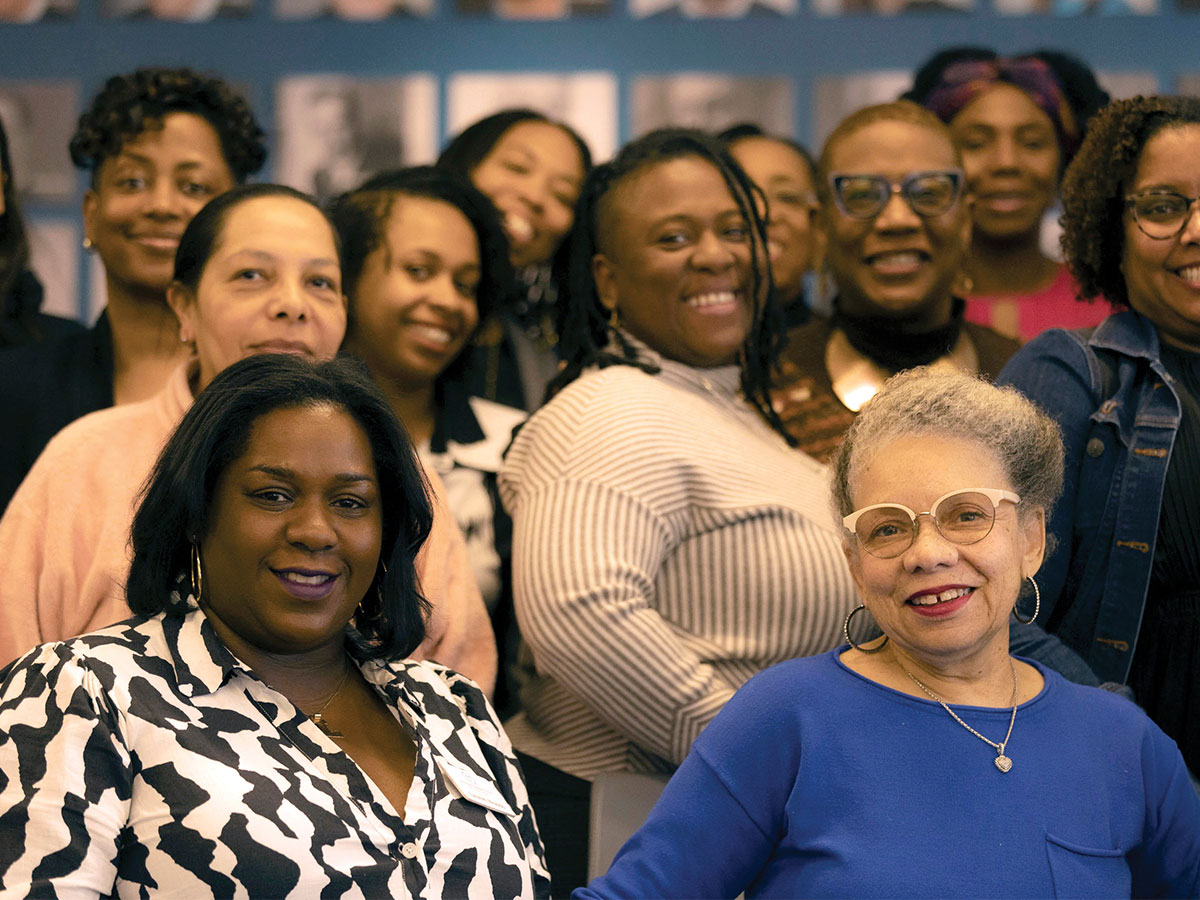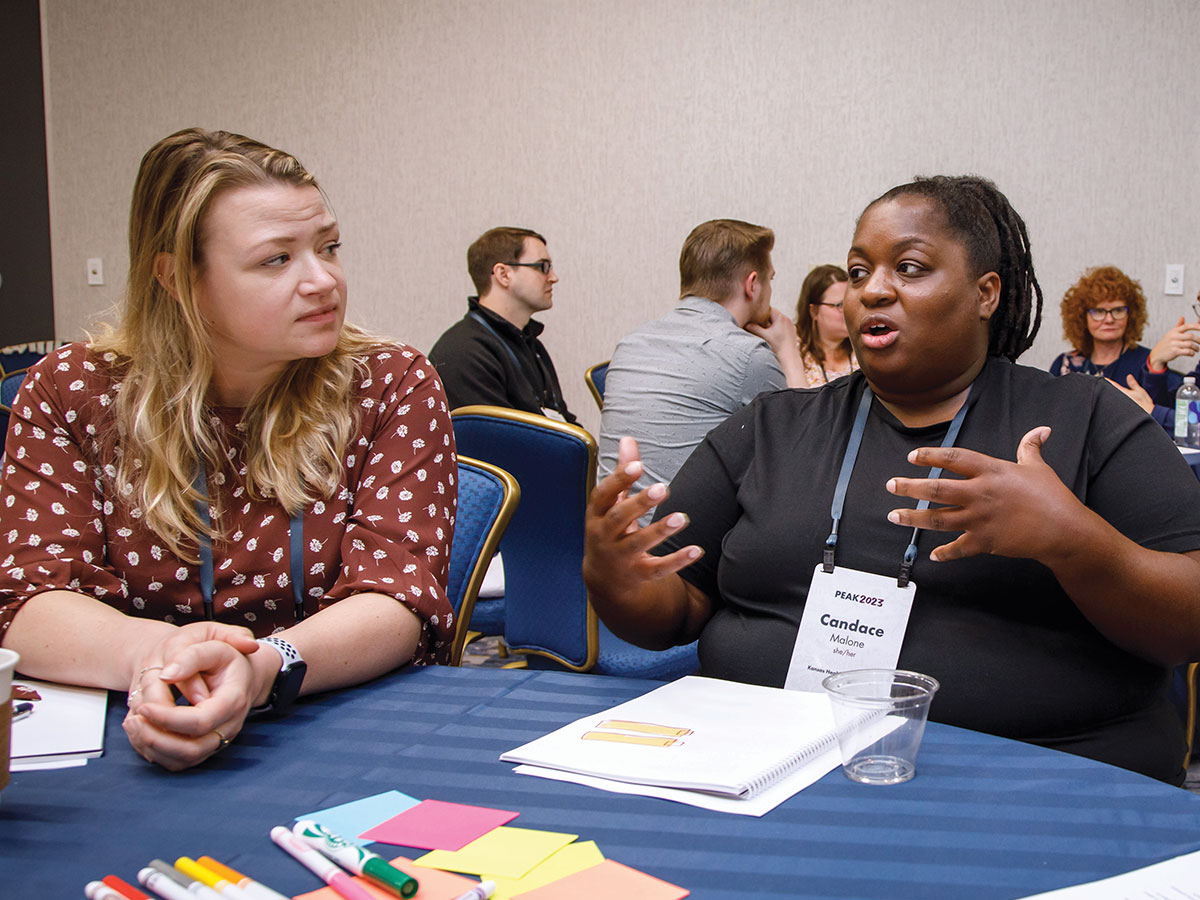Drive Equity: Improving practice to connect intent with impact

We are hopeful. In the months since the pandemic and the uprisings for racial justice have shaken the foundations of our American narrative, philanthropy is also making commitments to change its story, to be a better partner with leaders and communities of color, and to implement more equitable grantmaking practices.
There is much work to do. Consider that:
- Only 8.4 percent of foundation CEOs identify as a person of color, and only 7 percent of philanthropic funding supports ethnic or racial minority populations. D5 Coalition
- Latinos now represent 18 percent of the U.S. population, yet their allocation of funding remains at 1 percent. Candid
- Native American causes receive just 1 percent of funding. D5 Coalition
- There are huge disparities in the revenues and unrestricted assets between white-led and Black-led early-stage organizations. Black-led organizations have 24 percent smaller average revenues and 76 percent smaller unrestricted net assets, equating to a $20 million funding gap between the two. Echoing Green and The Bridgespan Group
- Organizations run by people of color have smaller budgets – $1.3 million, compared to $1.7 million for white-led organizations, and executive directors of color report more challenges in gaining access to and maintaining relationships with funders. Building Movement Project
- Only 23 percent of Black-led organizations have enough operating reserves to sustain their operations if faced with unexpected hardship. Emergent Pathways for ABFE
Yet, we are hopeful. A 2019 survey by Frontline Solutions on behalf of PEAK Grantmaking revealed that 64 percent of responding grantmakers have an equity policy or values statement that explicitly addresses diversity, equity, and inclusion; or include diversity and equity as a value in their mission, have a code of ethics, or a department focused on diversity and equity. Yet, there is much work to do: Only 34 percent of survey respondents reported that their organizations have demonstrable grantmaking practices that foster diversity, equity, or inclusion.
It is time for philanthropy to address this disconnect between intent and impact.
We know that our members are committed to driving equity, and that the challenge has often been not the what, but the how.
This week, PEAK Grantmaking has released a robust set of resources designed to help grantmakers address that challenge with the third of our five Principles for Peak Grantmaking: Drive Equity.
Building upon and paired with resources for our second Principle: Narrow the Power Gap, grantmakers now have an expanded set of powerful tools they can use in service of justice, inclusion, and equity.
Effective grantmakers recognize that they must work with urgency to undo the inequity of the past and proactively drive equity in their communities for the future. Our work focuses on the “how” of reducing the biases that inherently show up in grantmaking and decision-making processes, and how a data-informed approach to analyzing and improving grantmaking will enhance equity.
We have developed two recommendations.
Recommendation #1:
Reduce bias in decision-making and grantmaking processes.
Reducing bias begins with making equity a key part of the foundation’s culture and strategy – from the top down and the bottom up – and embedding it across the organization in meaningful ways. This includes naming and publicly sharing values related to equity, overcoming bias in hiring and promotion processes, and diversifying staff, leadership, and volunteer decision-makers.
It continues with taking an intentional look at every step in the grantmaking process and applying practices proven to reduce bias: in the language and questions on a grant application, in the process for sourcing potential grantees, in technology deployment, in the amount awarded to certain grantees, and in restrictions placed on grant dollars.
Key questions to consider:
- What approaches can you use to mitigate the impact of bias on your grant decisions?
- How can you bring a diversity of voices into grantmaking decisions?
Recommendation #2:
Collect, analyze, and use disaggregated demographic data to advance equity and impact.
For philanthropy to advance equity in all communities, it must first understand the demographics of the organizations being funded (and declined), the people being served, and the communities impacted.
Effective grantmaking organizations collect and report demographic data internally on their own board and staff. They also collect this information on grantee board and staff, people served, and communities affected by their funding. Then, they use that data to determine whether funding is being equitably distributed to traditionally underrepresented communities; and, if not, where the greatest inequities exist. Finally, the data is used to drive change in grantmaking practice, decision-making, strategy, and design.
Key questions to consider:
- How can the demographic data you collect support insight, impact, and equity?
- What are the tools and taxonomies you should use to collect and report on this data?
- How do you navigate legal issues like data privacy while communicating internally and externally about this data?
How you can lead the way
To help your organization ask and answer these key questions about equity, explore our new suite of Drive Equity resources – including an action planner, two case stories, six how-to guides, and a webinar.
Get oriented with our action planner, Strategies for Driving Equity in Grantmaking Practice.
Watch our introductory webinar, where we’ll explore what it means to Drive Equity and how PEAK can help you do it.
PEAK members have access to these new case stories of organizations who are doing this work well:
- How Brooklyn Community Foundation Centers Community Voices in Grantmaking Strategy
- A Decade of Building Toward Racial Equity at Woods Fund Chicago
Plus, PEAK Organization Members have exclusive access to our how-to guides, each providing detailed roadmaps for putting this principle into practice:
- Uncovering Unconscious Bias in Philanthropy
- How to Reduce Bias in Grantmaking Strategy, Community Outreach, and Applications
- How to Reduce Bias in Decision-Making and Grant Awards
- How to Recruit and Onboard Diverse and Inclusive Grant Committees
- How to Facilitate Inclusive Meetings
- How to Get Started with Demographic Data
Not a member? Join us!
Many of our colleagues in philanthropy-serving organizations across the country have demonstrated exceptional thought leadership around equity in the philanthropic sector. We encourage you to engage with this work by visiting our roundup of Drive Equity: Insights from the Field.



